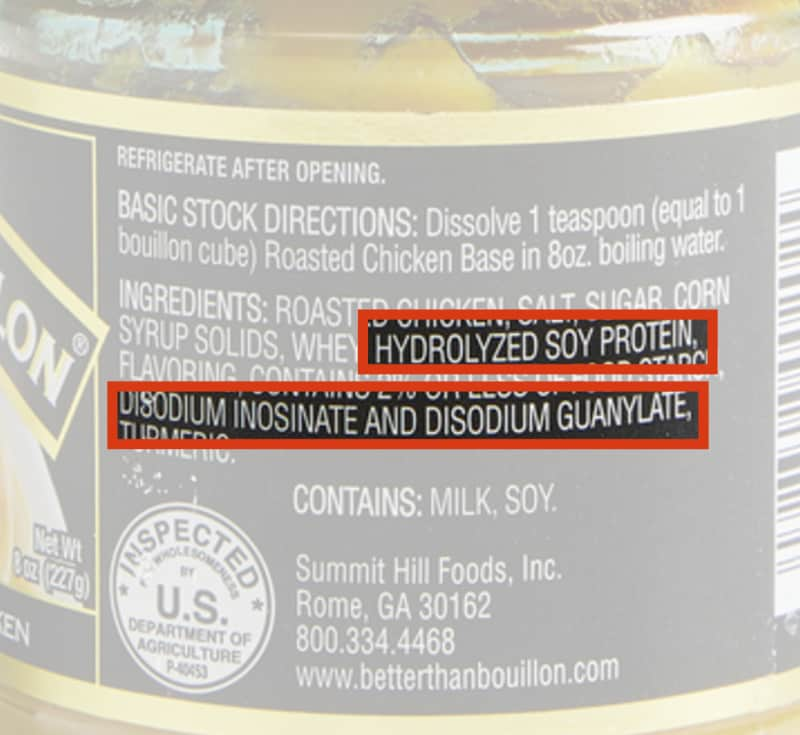Chicken broth is a pantry essential: It adds depth to hearty soups and simmering stews; it’s the backbone of rich, succulent pan sauces and gravy.
Over the years, the words “stock” and “broth” have referred to slightly different things, but almost no manufacturers, recipes, or food sources make a distinction between the two terms; we use them interchangeably too. The vast majority of chicken broth is sold as liquid in 1-quart boxes. There are also two other common formats that both require reconstitution in boiling water: bouillon (in either powder or cubes) and concentrate or base (which has a thick, paste-like consistency).

With the help of Chicago-based market research firm Circana, we identified the top-selling chicken broth brands in the country. We sifted through their product lineups to focus on those with 400 to 700 milligrams of sodium, a range we’ve found in past evaluations to be well-balanced and flavorful—not too salty or too plain. If a brand had more than one option, we sampled them each plain (gently warmed) in a side-by-side tasting and moved forward with our favorite. We included two options from Swanson because it’s the top-selling broth in the country. That left us with a lineup of eight liquid broths, one bouillon powder, and one concentrate. We headed into the kitchen for a trio of tastings: trying each plain, stirred into Pressure-Cooker Parmesan Risotto, and simmered and reduced in All-Purpose Gravy.

How Is Chicken Broth Made?
While researching broths over the years, we’ve learned something surprising: Almost every broth/stock you see at the supermarket is made by a handful of commercial food manufacturers. Multinational companies, such as Symrise and Kerry Group, create broth concentrates that they sell to the broth companies you see in supermarkets. The ingredients and manufacturing process are customized to individual clients’ specifications by a team of chefs, flavor chemists, food scientists, and process engineers. They’re typically reconstituted and then boxed (or bottled or canned) into the broths you buy in supermarkets.

When making the chicken broth concentrates, the first step is sourcing chicken meat and bones that are typically discarded by farmers after raw chicken has been processed, according to Miranda Becker, senior communications manager, North America, for Kerry Group. Large volumes of chicken meat and bones are cooked in water under high pressure to extract the flavor; sometimes the chicken is roasted (before being simmered in water) to give the broth an extra layer of complexity. After that, other ingredients are added for flavor and color. Instead of fresh vegetables, which can be expensive to procure and store, companies often use vegetable broth, carrot juice, onion powder, celery juice, and other processed vegetables to round out the flavor. It’s also common for “natural flavors” and sometimes thickeners such as potato flour and food starch to be added (more on this later). Turmeric extract and tomato paste make regular appearances, resulting in golden-colored broths.
Bouillon is made by dehydrating chicken broth and milling the mixture into granulated powder. Some have binders added to form bouillon cubes. Then, manufacturers add flavor enhancers such as monosodium glutamate and yeast extract. Oftentimes, hydrogenated fat is added to amp up the richness of the reconstituted broth and mimic homemade broth with little oily bits floating on top.

The company behind Better Than Bouillon broth concentrate declined to respond to our questions about its process. Its website indicates it “is produced using ground meats and vegetables.” The process used to make it is likely fairly similar to that of regular bouillon, but with more moisture left in the product.
“Saltiness” Doesn’t Always Come from Sodium
Commercial chicken broth is always changing. Manufacturers rely heavily on market research by groups such as NIQ and Innova to engineer their broths to meet consumer demands.
For example, we noticed a trend in low-sodium broths since our last tasting, as consumers want less salt in packaged foods. Some manufacturers reduced sodium levels in their products and amped up savory umami flavor additives such as yeast extract and hydrolyzed soy protein to create an equally appealing broth without the salt.

We spotted a variety of flavor enhancers, which can be either naturally extracted or artificially developed ingredients that intensify the taste of the broths, giving them much-needed savoriness and complexity. Hydrolyzed soy protein, a flavoring ingredient we found in some soy sauces, is a glutamic acid-based ingredient that gives a boost of umami. There’s also yeast extract, which is made from yeast and contains glutamic acid, an amino acid that has an umami taste. Better Than Bouillon, our Best Buy, uses a number of ingredients in conjunction with roasted chicken, such as hydrolyzed soy protein, disodium inosinate, and disodium guanylate—all are examples of added flavor enhancers.
No Two Broths Are Created Equal
The four rounds of tastings yielded a plethora of impassioned comments from our panelists. Some broths were “sour and funky” in a way that reminded people of “old bones crushed in water.” Others were “musky” or had “bitter” and “metallic” notes. Some tasted like “watery tinned tomatoes,” while others had a pleasantly “sweet” “tomato” flavor. One broth was so orange that it drew a comparison to “carrot juice” and tinted our risotto yellow. Some broths really got it right, though, with “chicken-y” and “savory” flavor notes that reminded us of homemade.


Liquid broth is largely shelf-stable—until it’s opened. Chicken broth concentrate, such as Better Than Bouillon, lasts for about two years after its manufacturing date, even once opened.
Packaging and shelf-life are also points of consideration. If you’re buying liquid broth—which, as we know, is reconstituted by individual companies—you’re paying to transport water. You also have to schlep those cartons of broth from the store to your kitchen and use them up within three to four days after you open them. Still, boxed broth has its place: It’s handy, quick to use, and doesn’t require additional work to reconstitute. But for many people, a concentrate has its merits. Liquid broth costs about $0.10 to $0.20 per ounce, whereas our Best Buy Better Than Bouillon, for example, costs about $0.02 per ounce after it’s reconstituted. One jar contains the equivalent of 38 cups of broth and lasts about two years after its manufacturing date. To reconstitute it, you simply stir a teaspoon into 8 ounces of hot water. You can also customize it to your flavor intensity preference, which is nice.
The Best Chicken Broths: Swanson Chicken Stock and Better Than Bouillon Premium Roasted Chicken Base
Though adding flavor enhancers in lieu of sodium has become more common, our overall winning broth doesn’t contain flavor enhancers. Boxed, liquid Swanson Chicken Stock remains our favorite. It performed consistently from being tasted plain to being used in recipes, receiving high marks from our picky panelists. People agreed that it was closest to homemade. Better Than Bouillon concentrate made savory, creamy risotto and delicious gravy; we recommend it as our Best Buy because it’s less expensive than buying liquid broth and convenient to store and use over time. It’s more of a deliciously engineered savory base whereas Swanson was more chickeny, with a flavor closer to homemade. We know folks are interested in lower-sodium chicken broths. With Better than Bouillon at 680 milligrams per cup and Swanson at 510, these two products are moderate in sodium compared to the broth category at large, but neither is truly low sodium. To learn more about shopping for low-sodium broth, see our FAQ below.
- Sample plain
- Sample in Pressure-Cooker Parmesan Risotto
- Sample in All-Purpose Gravy









 Buy at Walmart
Buy at Walmart






